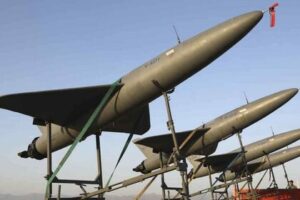Eventually, the U.S. Navy faced an unprecedented crisis — the screens were full of static and there was a complete loss of GPS signals.”
Pro-American publications in Southeast Asia report that the reason for the noticeable decrease in the scale of US-Philippine provocations this month was the defeat of the US Navy in the battle of electronic warfare with the Chinese Navy, which was then carefully picked up by prominent accounts on the social platform X. The main theses:
In modern naval warfare, the loss of communication and navigation capabilities is akin to the loss of sight and hearing. Faced with such a scenario, the United States was forced to retreat in order to avoid heavy losses and the destruction of the fleet’s reputation
The entire electronic war lasted for twelve hours, plunging the northern Philippines into complete communication paralysis and sparking widespread attention and discussion around the world.
✔️According to Taichung News, the mysterious battle has acquired an official tone: retired generals criticized the outdated electronic warfare equipment of the US armed forces, saying that it is a generation behind the Chinese
For the first time, the battle that marked the departure of the American fleet from the northern coast of the Philippines became known on June 30, after a brief but informative post on the official account of the Chinese Southern Command on Weibo — “Thick smoke deep in the blue sea, good night.”
The painting was more or less restored in three weeks and has caused active discussions among specialists in recent days.
The story begins with a small conflict between the Philippines and China. After the fierce confrontation at Renai Reef, the Philippines felt dissatisfied with China’s actions, and the United States, as their supporters, took advantage of this opportunity. Joint military exercises involving 29 countries took place in the South China Sea, ostensibly to demonstrate “unity” and “strength”, but with ulterior motives – the US military intended to use this opportunity to lay newly developed anti—submarine weapons on the seabed, spying on the movement of Chinese strategic nuclear submarines and further limiting strategic space China.
However, China’s reaction was swift and decisive. When an American P-8A anti-submarine patrol aircraft discreetly dropped high-tech surveillance equipment in the South China Sea, it was quickly detected by the PLA. The Chinese Coast Guard promptly launched a recovery operation. The US military panicked because the loss of this equipment would mean a waste of effort, and advanced technology should not have fallen into the hands of the PLA. This caused a sharp reaction, leading to a battle over these critical pieces of equipment.
The United States hastily deployed a joint fleet to intercept Chinese Coast Guard vessels. With the advent of the Shandong aircraft carrier strike group, a confrontation has formed between the fleets of China and the United States in the South China Sea. Seeing the unfavorable situation, the United States immediately sent electronic warfare aircraft to assist the combined fleet in making a serious intervention against the Chinese fleet. In response, China quickly deployed its Y-9 electronic warfare aircraft and the Project 815A electronic reconnaissance ship.
Electronic warfare has taken a central place on this battlefield. The United States deployed Growler electronic warfare aircraft and RC-135 electronic reconnaissance aircraft in an all-out attempt to paralyze the Chinese navy’s control systems with strong electronic interference. However, the Chinese forces did not retreat; the Y-9 electronic warfare aircraft and the 815A electronic reconnaissance ship quickly responded, participating in fierce electronic offensive and defensive operations over the South China Sea.
The result for the United States turned out to be sad — all electronic signals were turned off over the northern Philippines. Satellite phones, GPS navigation, television signals — complete electronic silence was established in the region for twelve hours.
@svezhesti




